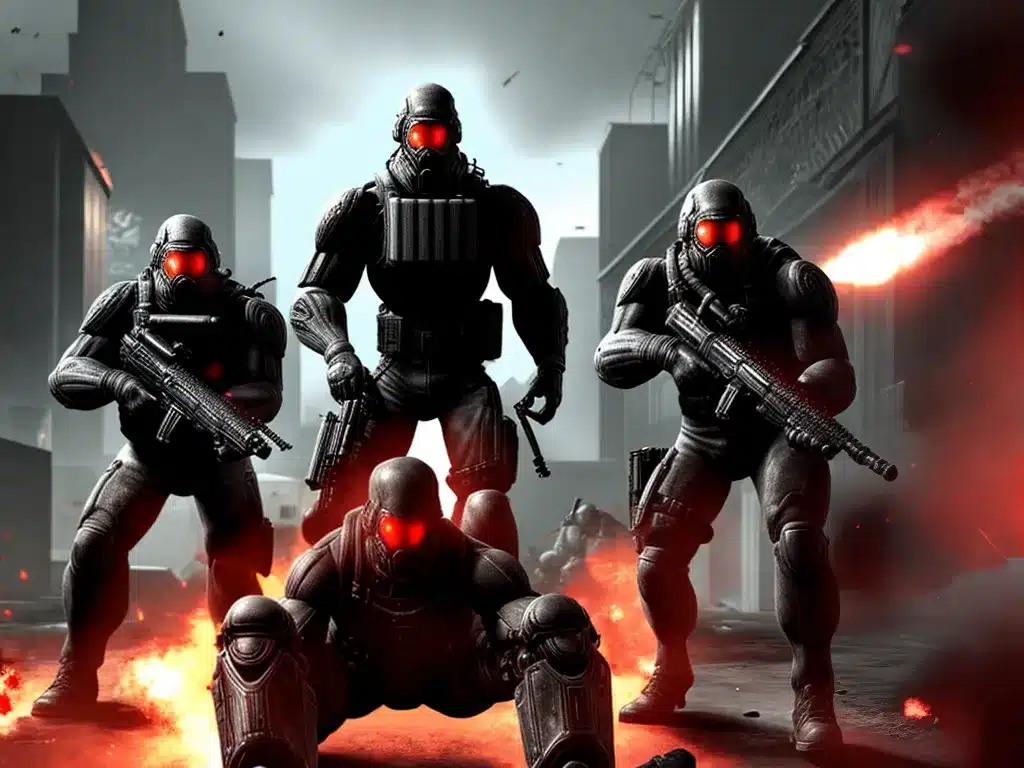
Introduction
First-person shooter (FPS) games have come a long way since their inception in the 1970s. As someone who has been playing FPS games since the 90s, I’ve witnessed this genre evolve from simple maze games to today’s photorealistic masterpieces. In this article, I take a nostalgic walk down memory lane and highlight some of the classic FPS games that paved the way for the legendary franchises we know and love today.
The Early Days
Maze War and Spasim
The earliest known examples of FPS games were Maze War and Spasim. Developed in the 1970s, these games featured crude wireframe 3D graphics but allowed players to explore maze-like environments from a first-person perspective. Gameplay was simple – players had to navigate the maze and shoot other players. However, these early games laid the foundation for future FPS titles.
Wolfenstein 3D
Released in 1992, Wolfenstein 3D took the FPS genre to new heights in terms of graphics and gameplay. Developed by id Software, Wolfenstein 3D was set in a Nazi castle filled with guards, attack dogs, and even zombies! As a prisoner trying to escape, I had to shoot my way through the castle using an assortment of guns. With its smooth 3D graphics and support for multiplayer deathmatches, Wolfenstein 3D became a classic.
Rise in Popularity
Doom
Doom took the FPS genre mainstream in 1993. The graphics were lightyears ahead of Wolfenstein 3D, with more realistic 3D environments and even lighting effects. Doom also popularized multiplayer “deathmatch” games where players could compete against each other. Thanks to its adrenaline-fueled gameplay, Doom became a cultural phenomenon in the 90s. To this day, Doom is considered one of the most influential games ever made.
Quake
Released in 1996, Quake ushered in a new era of 3D graphics thanks to its fully 3D environments. The lighting, textures, and polygon models were far more advanced compared to previous FPS games. Quake also introduced verticality in level design – platforms, bridges, and stairs added new dimensions to gameplay. The iconic quad-barreled shotgun and multiplayer modes like capture the flag cemented Quake’s legacy.
Evolution of Gameplay
Goldeneye 007
Based on the James Bond film, Goldeneye 007 (1997) brought the FPS genre to consoles. Its excellent single-player campaign with objective-based missions was a breath of fresh air from traditional run-and-gun FPS gameplay. The 4-player local multiplayer mode also became a classic, offering a variety of arenas and game modes. Goldeneye proved FPS games could work wonders on consoles.
Half-Life
Valve’s Half-Life (1998) featured a strong emphasis on environmental storytelling and scripted sequences. As players navigated through the Black Mesa Research Facility, they uncovered a deep narrative filled with memorable characters. Half-Life showed that FPS games could be more than just shooting – they could drive emotionally engaging stories.
Halo: Combat Evolved
Halo (2001) established console FPS games as equals to their PC counterparts, thanks to its responsive controls, vehicles, and regenerating health system. Set on a mysterious alien ringworld, Halo’s epic sci-fi story and sandbox-style gameplay gave players an incredible amount of freedom. Features like vehicular combat and co-op campaign set new benchmarks for console FPS gaming.
Modern Classics
Call of Duty 4: Modern Warfare
The fourth entry in the Call of Duty series became a massive hit, largely due to its contemporary military setting. The campaign featured memorable missions like “All Ghillied Up” and novel gameplay elements like the AC-130 gunship. The fast-paced multiplayer mode also gained widespread popularity. Modern Warfare paved the way for future military shooters.
Bioshock
Bioshock (2007) enthralled players with its Art Deco inspired underwater city of Rapture. Blending FPS gameplay with role-playing elements, Bioshock placed a big emphasis on storytelling, atmosphere, and player choice. Features like shooting spells from your hands made combat uniquely entertaining. Bioshock proved the FPS genre was ripe for innovation.
DOOM (2016)
This reboot of the classic DOOM series contained all the gory ultraviolence fans loved about the original games. Blasting demons on Mars and in Hell with an array of guns and melee weapons provided endless thrills. DOOM (2016) reminded us that FPS games are at their best when they fully embrace adrenaline-fueled action.
Conclusion
The evolution of first-person shooters has been incredible to witness. From humble beginnings as crude maze games to today’s big-budget blockbusters, FPS titles have come a long way. Wolfenstein 3D, Doom, and Quake laid the groundwork with their cutting edge graphics and multiplayer modes. Goldeneye and Halo proved FPS games could thrive on consoles. And modern classics like Call of Duty 4 and Bioshock have showcased the genre’s versatility. As technology continues to progress, I eagerly look forward to seeing how first-person shooters evolve in the future.












